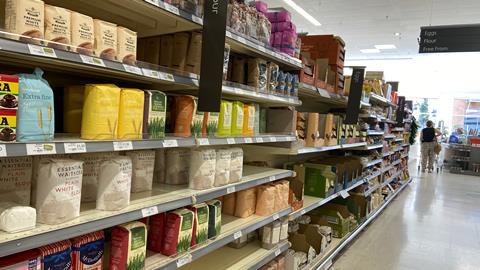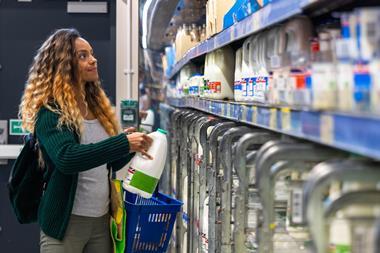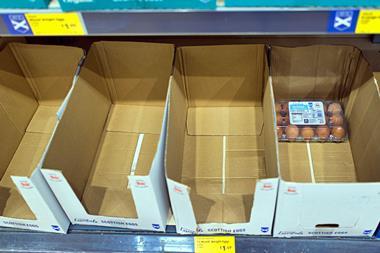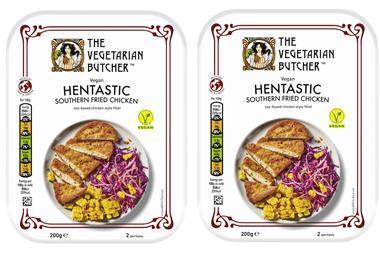Food prices show no signs of easing despite key commodity costs falling consistently over the past year
Commodities like vegetable oils and wheat have halved in price compared to a year ago when Russia’s invasion of Ukraine sent food and fuel prices rocketing, Mintec data shows. Rapeseed oil, maize, and soybean are also down.
But despite the falls, annual food inflation hit 19.1% in March, according to the ONS, with inflation on flour, bread and cereals hitting record highs.
It is not only food costs now tumbling. Packaging prices have also plunged in the past year. Steel used for cans is down 34%, plastic down 24%, and paperboard down 15%.
Container shipping rates too have largely returned to pre-pandemic levels, IHS Markit said.
Falling farmgate milk prices have led supermarkets to slash in-store prices by more than 10% in recent weeks, but this will not be the case with longer-contract agricultural commodities like grains and oils, which typically take longer to feed through to price changes, said IPLC partner Paul Stainton.
“The data showing a drop in year-on-year commodity prices such as rapeseed oil and wheat does not factor in when supermarkets and their suppliers have contracted for a certain volume of product, as is normally the case with the likes of oil, pasta, and cheese,” Stainton said.
“What it does indicate is that future contracts will be at lower prices, at which stage the supermarkets should lower their retail prices.”
“The issue you have with anything bought on the commodity market is that it is not as simple as looking at a price today and then seeing that reflected on shelf,” Retail Mind director Ged Futter agreed.
“At some point prices supermarkets are paying will start to fall and retail prices will then fall. But I don’t expect this until Q4 of this year,” Futter said.
So while the easing in commodity prices should be mildly reassuring to food businesses, it “doesn’t necessarily mean we’ll see a lot of price cuts soon”, IHS Markit analyst Lee Bridgett agreed, as other factors such as consumer demand and labour costs also contributed to overall inflation.
Tesco CEO Ken Murphy also warned last week shoppers should not expect price decreases before the second half of the year as deflation in some areas like wheat and oil was still being offset by inflationary pressures across rice and protein.
March rice stock prices have increased by as much as 20% year on year, while UK pork and beef prices were up 51% and 17% respectively.
However, Murphy noted some lines such as baking should “get easier” soon as “they are so closely linked to energy costs”. Wholesale gas prices fell 60% from a year ago, while the price of oil fell by 30%, ONS figures showed.
“Products more closely linked to grains and energy prices should see inflation relief from easing of input price pressures,” Bridgett said. “But the war disruptions haven’t been the only challenge of the last year and there are a lot of other inflationary pressures for food prices right now.”
This includes the drought in Europe last year, winter storms in Spain and Morocco earlier this year, and the avian flu which has affected UK chicken, turkey and egg production.
“Inflation is still occurring in many categories, wages will be increasing now, energy is still very high for many suppliers,” Futter added. “Customers are not ‘shouldering the high prices’ – the prices are reflective of the costs that suppliers have incurred.




















No comments yet